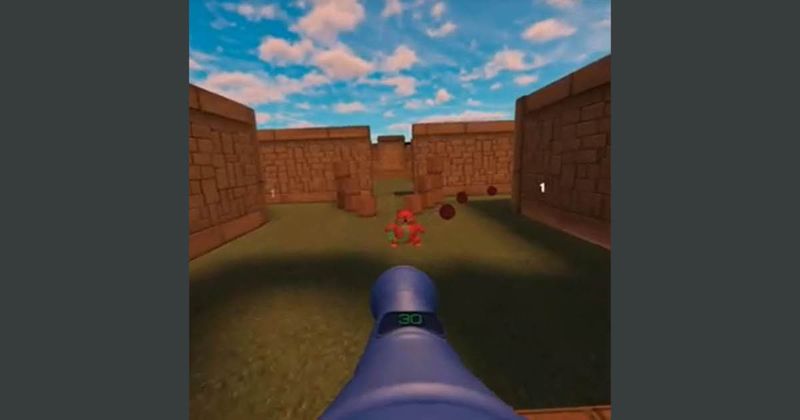Virtual reality program helps calm kids, teens during IV placement
A virtual reality intervention called “Bear Blast” significantly decreased pain and anxiety among children and teenagers while they underwent peripheral IV catheter placement, trial data showed.
“Kids hate blood draw and sometimes scream, cry, yell or run away, which makes the procedure a lot more difficult,” Jeffrey I. Gold, PhD, founder and director emeritus of the Pediatric Pain Medicine Clinic and an investigator at The Saban Research Institute of Children’s Hospital Los Angeles, told Healio Primary Care. “Virtual reality helps the child be calm, which then keeps the caregiver calm and relaxed, and then that helps the phlebotomist or the IV placement happen more rapidly and efficiently with less stress, less battle and less anxiety.”

Photo source: The Saban Research Institute of Children’s Hospital Los Angeles
While the use virtual reality in the health care setting has existed for some time, there is still a lack of research on the benefits of virtual reality interventions for “managing procedural pain and anxiety in pediatric settings,” Gold and colleagues wrote in JAMA Network Open.

The few studies that have explored this topic have “been limited, comprising small samples and results that have mostly been reported in technological and non-pediatric publications, thereby limiting the impact or relevance of the findings for direct clinical services,” they wrote.
In the new study, Gold and colleagues recruited 107 patients (median age, 14.7 years; 63% boys; 43.4% Hispanic or Latino), their clinicians and their caregivers. Minutes before each patient was scheduled to have peripheral IV catheter placement, he or she was randomly assigned to undergo standard care, which used music, coloring, singing, talking or a numbing product during the placement (n = 54), or AppliedVR’s Bear Blast virtual reality program (n = 53).
The virtual reality program took users through a “preset path through a colorful, highly interactive three-dimensional environment filled with animated landscapes, buildings and clouds, during which the user’s gaze controlled the direction of a cannon fired to knock down teddy bears,” Gold and colleagues wrote. All patients, their caregivers and the attending clinicians, regardless of intervention, completed questionnaires that assessed pain and emotions/feelings prior to the start of either intervention and again when it was completed.
Gold and colleagues reported that the virtual reality recipients had lower mean post-peripheral IV scores than the standard care recipients in many of the measures studied: patient-reported anxiety (1.85 points; 95% CI, 1.28-2.41 vs. 3.14 points; 95% CI, 2.59-3.68); clinician-reported anxiety (2.04 points; 95% CI, 1.37-2.71 points vs. 3.34 points; 95% CI, 2.69-3.99) patient-reported pain (1.34 points; 95% CI, 0.63-2.05 vs. 2.54 points; 95% CI, 1.78-3.3), caregiver-reported pain (1.87 points; 95% CI, 0.99-2.76 vs. 3.01 points; 95% CI, 1.98-4.03) and clinician-reported pain (2.05 points; 95% CI, 1.47-2.63 points vs. 3.59 points; 95% CI, 2.97-4.22 points).
“Aside from lower levels of baseline pain and anxiety, no demographic variables among patients in the [virtual reality] group were associated with lower levels of post-peripheral IV catheter pain and anxiety,” the researchers wrote.
A virtual reality headset costs about $300 and the cost of programs such as Bear Blast will vary, according to Gold.
